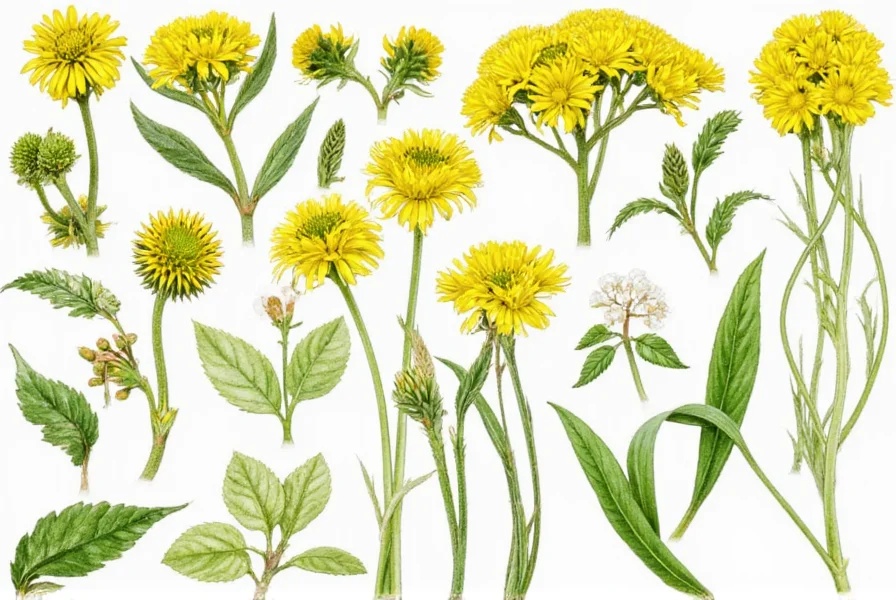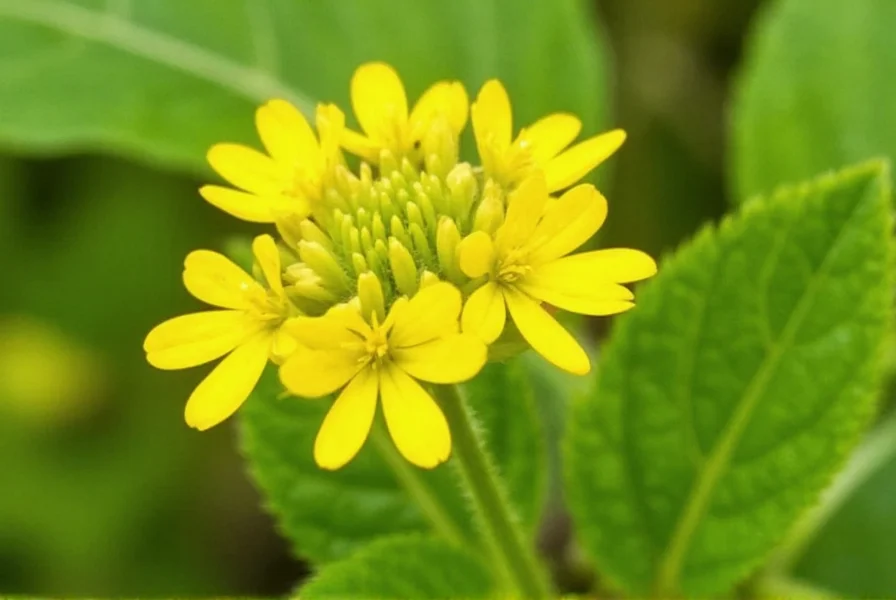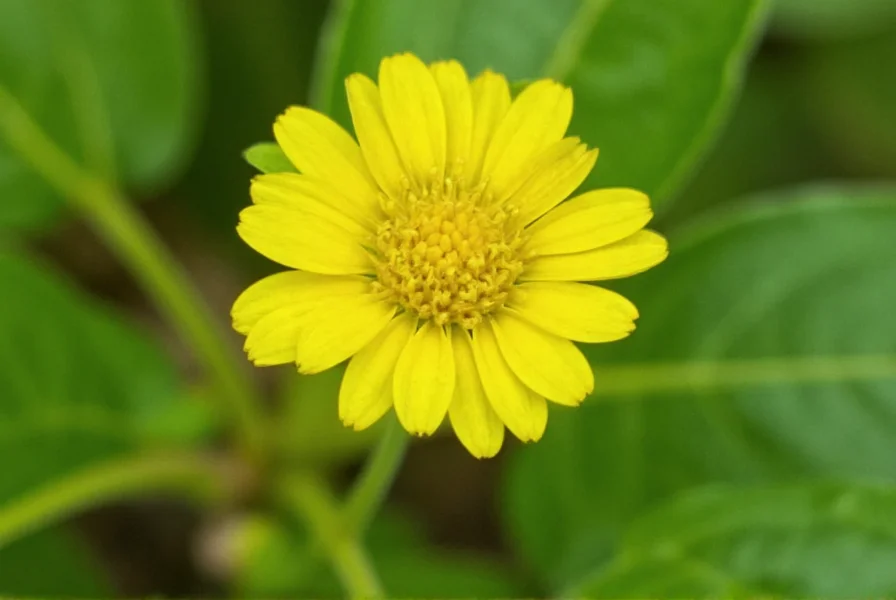When gardeners and land managers encounter yellow-flowered clover-like plants, accurate identification becomes crucial for proper management. The term "yellow clover" commonly causes confusion between true clovers (Trifolium species) and the Melilotus genus plants that share similar characteristics but differ significantly in properties and uses.
Identifying Yellow Clover Species
Yellow sweet clover (Melilotus officinalis) and tall yellow sweet clover (Melilotus altissimus) represent the primary plants referred to as yellow clover. These biennial plants typically reach heights of 3-8 feet when mature. Key identification features include:
- Flowers: Small, fragrant yellow blossoms arranged in elongated clusters (racemes)
- Leaves: Trifoliate pattern with toothed edges on the terminal leaflet
- Stems: Grooved, erect stems that become woody with age
- Seeds: Small, hard, olive-green to brown seeds contained in single-seeded pods
- Aroma: Sweet, coumarin-like scent, especially noticeable when plants are cut or dried
| Feature | Yellow Sweet Clover | Black Medic | True White Clover |
|---|---|---|---|
| Flower Color | Yellow | Yellow | White |
| Plant Height | 3-8 feet | 6-18 inches | 4-8 inches |
| Growth Habit | Upright, single stem | Low-growing, spreading | Low-growing, spreading |
| Leaf Characteristics | Toothed terminal leaflet | Smooth leaf edges | Smooth leaf edges |
| Flower Shape | Elongated cluster | Rounded cluster | Rounded cluster |
Distinguishing Yellow Clover from Similar Plants
Many people confuse yellow sweet clover with black medic (Medicago lupulina) due to their similar yellow flowers. However, several key differences exist between these plants. Black medic features smaller, more rounded flower clusters and grows as a low-lying, spreading plant rather than the tall, upright growth pattern of yellow sweet clover. The leaf edges of black medic remain smooth, while yellow sweet clover displays distinctive teeth on the terminal leaflet.
Another common point of confusion occurs between yellow sweet clover and hop clover (Trifolium agrarium), which also produces yellow flowers but maintains the characteristic rounded flower heads of true Trifolium species. Understanding these differences proves essential when determining appropriate management strategies for yellow-flowered clover-like plants in your garden or landscape.

Ecological Benefits of Yellow Clover
Yellow sweet clover serves as an important nitrogen-fixing plant that improves soil fertility through its symbiotic relationship with rhizobia bacteria. This characteristic makes it valuable in agricultural rotations and soil restoration projects. The plant's deep taproot system helps break up compacted soil while bringing nutrients from deeper soil layers to the surface.
As a nectar source, yellow sweet clover supports honey production and provides sustenance for various pollinators including bees, butterflies, and other beneficial insects. Its extended blooming period from late spring through summer offers reliable forage when other plants may not be flowering. In restoration ecology, yellow sweet clover often serves as a pioneer species that helps stabilize disturbed soils while more permanent vegetation establishes.
Practical Applications and Considerations
Historically, yellow sweet clover has served multiple purposes across different cultures. Farmers have utilized it as livestock forage, though caution is necessary due to potential coumarin content that can cause bleeding disorders in animals when the plant ferments improperly. The flowers produce high-quality honey when harvested by bees, making it valuable to apiarists.
Gardeners sometimes incorporate yellow sweet clover into cover crop mixes for its soil-enhancing properties, though its biennial nature and potential invasiveness in certain regions require careful management. In some areas, yellow sweet clover has become naturalized to the point of being considered invasive, outcompeting native vegetation in disturbed areas and along roadsides.

Managing Yellow Clover in Landscapes
When yellow sweet clover appears in unwanted locations, several management approaches exist. For small infestations, hand-pulling before seed set proves effective, though the deep taproot requires complete removal to prevent regrowth. Mowing before flowering can reduce seed production but typically requires multiple treatments over several seasons for complete control.
In agricultural settings, crop rotation with competitive grasses can gradually suppress yellow sweet clover populations. Organic gardeners sometimes use cardboard or thick mulch to smother established plants. Chemical control options exist but should be considered carefully due to potential impacts on beneficial insects and soil health. The most sustainable approach often involves understanding why yellow sweet clover established in a particular location and addressing underlying soil conditions that favor its growth.
Common Misconceptions About Yellow Clover
Many people mistakenly believe all yellow-flowered clovers belong to the same genus, when in reality yellow sweet clover (Melilotus) differs significantly from true clovers (Trifolium). Another common misconception suggests yellow sweet clover always harms ecosystems, while in reality it provides valuable soil improvement and pollinator support in appropriate contexts.
Some gardeners worry that yellow sweet clover will aggressively take over lawns, but its upright growth habit and biennial lifecycle make it less competitive in regularly mowed turfgrass than many other weeds. Understanding these distinctions helps land managers make informed decisions about whether to encourage, tolerate, or control yellow-flowered clover species in their specific environments.
Frequently Asked Questions
Is yellow clover the same as regular clover?
No, yellow clover (Melilotus officinalis) belongs to a different genus than true clovers (Trifolium species). While both have trifoliate leaves, yellow sweet clover features toothed terminal leaflets, grows much taller (3-8 feet), and produces elongated flower clusters rather than the rounded heads characteristic of true clovers.
Is yellow clover beneficial for bees and pollinators?
Yes, yellow sweet clover serves as an excellent nectar source for honeybees and other pollinators. Its extended blooming period from late spring through summer provides reliable forage when other plants may not be flowering. Beekeepers often value areas with yellow sweet clover for producing high-quality honey with distinctive flavor characteristics.
Can yellow clover improve soil quality?
Absolutely. As a legume, yellow sweet clover fixes atmospheric nitrogen through rhizobia bacteria in its root nodules, enriching soil fertility. Its deep taproot system also breaks up compacted soil and brings nutrients from deeper layers to the surface. These characteristics make it valuable as a cover crop or in soil restoration projects, though its biennial nature requires planning in crop rotations.
Is yellow clover invasive in all regions?
No, yellow sweet clover's invasiveness varies by region. While it has become naturalized and potentially invasive in some areas (particularly across North America), it remains a valuable forage and soil-improvement plant in other regions. Before deciding to remove yellow clover, check with local agricultural extension services to determine its status in your specific area and whether management is necessary.
Can humans consume yellow clover?
Yellow sweet clover contains coumarin compounds that can convert to dicoumarol when the plant spoils, which acts as a blood thinner. While historical medicinal uses exist, modern consumption isn't generally recommended without proper processing. The flowers can be used to make tea in small quantities, but caution is advised, especially for those on blood-thinning medications or with bleeding disorders.











 浙公网安备
33010002000092号
浙公网安备
33010002000092号 浙B2-20120091-4
浙B2-20120091-4